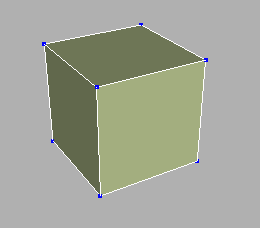3D Animation Workshop: Lesson 110: Getting Under the Hood
|
|
Lesson 110 - Getting Under the Hood - Part 1
First, a couple of quick announcements:
Those of you who have purchased my new book on Shout3D should be aware that a number of important files were, unfortunately, omitted from the CD-ROM that accompanies the text. You can download these files from a link on the left side of the 3D Animation Workshop home page.
Also, the final version of Shout3D 2.0 has been released and is available for free download from www.shout3d.com. Make sure you use this final version, rather than the early release version on the CD that accompanies the book.
Back to business. In the last lesson, I stressed the importance of developing an "under the hood" understanding of 3D computer graphics in today's competitive climate. We began an introduction of some fundamental concepts, to be developed further in this and the following column.
The rendering process uses information about a 3D scene to create a 2D image consisting of an array of colored pixels. The renderer (as we may call program that performs the rendering process) works from a body data that completely describes the scene.
The scene description must specify the shapes of all geometric objects in the scene. It must specify the nature of all light sources that illuminate these objects. It must specify the location of all geometry and lights in the scene, as well as the location and orientation of the camera that the scene is viewed through for rendering purposes. Don't let your mind gloss over these words. Take a moment to absorb this big picture. I'm always amazed at how few 3D artists seem to grasp these basic principles.
Let's consider geometry first. We'll ignore the complexities of NURBS and other spline surfaces (which must be tessellated into polygons for rendering in any case), and consider pure polygonal mesh geometry. The shape of a model's geometry is defined by a mesh (or network) of connected polygons. Take the simplest possible example  a cube-shaped mesh

How many vertices is this mesh composed of? How many polygons are here? What kinds of polygons are they?
| To Continue to Parts 2 and 3, Use Arrow Buttons |
|
Created: January 16, 2001
Revised: January 16, 2001
URL: https://webreference.com/3d/lesson110/


 Find a programming school near you
Find a programming school near you